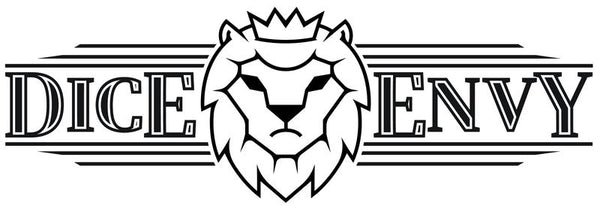A good set of balanced DnD dice is practically a party member of their own. These dice are collected with care by seasoned tabletop roleplaying game lovers, and a stylish pair of balanced dice is worth its weight in gold.
But let’s dive into that key little feature: balancing! For dice to be perfectly random when they’re rolled, they can’t give any face a slight advantage over the others. It’s disastrous for the game when the balance is off, but it’s almost impossible for manufacturers to get 100%, perfectly right. Let’s explore why!
How Dice Are Considered “Fair”
There’s a surprising amount of math that goes into the making of perfect dice. Surprising, perhaps, until you remember they’re trying to make tiny geometric polygons.
A die is considered fair if it is “fair by symmetry”. The principle states that a die is completely fair if each side has exactly the same dimensions and shape. A die is considered more “fair” if it has more symmetries. The more symmetries the die has, the more chances physics has to change the way it tumbles, and the less likely a roll is able to be manipulated. Any way you roll a die would seem random enough, most people would argue, but it’s not always so: people in Vegas are actually taught how to roll a die “more fairly.”
The ancient Greek mathematician Archimedes hypothesized roughly 2,000 years ago that there are only 30 varieties of fair balanced dice. (Yes, this includes your D&D dice, don’t worry.) Fast forward to today, and a Stanford mathematician proved him right.
What Goes Into the Making of Casino Dice
Balanced casino dice are pretty different from balanced D&D dice. It's no secret that casinos are insanely rigorous about the standard of their dice. When it comes to gambling with dice games, there’s a ton of money on the line, and people take fairness very seriously.
That said, the “perfectly” balanced dice used in casinos are made with extremely strict standards. The dice are made in hermetically sealed chambers to stop air from affecting the process. The dice will each have a serial number that refers to when, how, and by whom they were made.
In the actual casino, an inspector known as a boxperson will do a quality inspection of the dice before play. They will check if all the opposite sides equal seven, the dice are free from defects, the dice have valid serial numbers, and the pips in the dice are equal in depth.
Sometimes the boxperson will use tiny measuring tools like an electronic micrometer to test even dimensions, a balancing caliper to test weight, a steel set square to check squareness, and a magnet to test for added metal.
Even with these extra steps, the dice are still changed roughly every 4-8 never to be used again lest some micro fracture occurs.
Good luck implementing this in your next D&D game. Personally, we think it’s a bit overkill.
How To Check If Your Dice Are Balanced
Without resorting to the micro tools that casino die makers use, you can still use some simple tests to check for balanced D&D dice. If you’re having strange luck with your rolls during your D&D game and some players are starting to suspect dodgy dice, you should try to test if the die is good once and for all!
One great way to check if your dice are balanced is to use a glass of water mixed with a lot of salt. By using this simple method, you can roll the die in the water and test if it’s genuinely a random result every time. If it’s unbalanced, it should be quickly obvious that the same number is popping up on the top every time.
You can also simply record about a thousand dice rolls and see if the results are roughly even, but we wouldn’t wish that on our enemies.
Why It’s Technically Impossible to Achieve Perfectly Balanced Dice
Now you know the wild lengths dice manufacturers go to in order to make their dice as balanced as possible, but even they know that balanced dice can never truly be perfectly balanced. Maybe they can get to 99% accuracy, but physics prevents perfection here.
An article by Inside Science (which, incidentally, starts with the words Dungeons and Dragons) explains in great detail why. It’s the same reason that we can’t predict if a rocket launch will work every time, even if the science checks out and everything works perfectly in theory.
It’s because physics is calculated in a vacuum. It can’t perfectly account for minute randomness in air resistance, friction, human factors, gravity, and other tiny variables. Table friction is especially important. A table with less friction causes the dice to roll more, while naturally, a table with less friction will cause the dice to roll less. The laws of physics are a bit more like guidelines when you get into the minuscule, nitty-gritty details.
One important thing to note is that while perfection is not technically attainable, we’re talking about the difference between 99.999+% and 100% randomness. It probably isn’t going to affect your Dungeons and Dragons game whatsoever, so don’t worry: any solid quality pair of balanced D&D dice will do the trick!
Our Quality Standards
As a dice company, we obviously take our dice manufacturing very seriously! But we’re not just about the cool aesthetics (though we’re DEFINITELY about the cool aesthetics, too), we genuinely care about creating high-quality, balanced dice. We take great care to avoid uneven weighting and poor symmetry. If you’re after a good game with your friends with quality, reliable dice, visit Dice Envy and find your favorite set.
